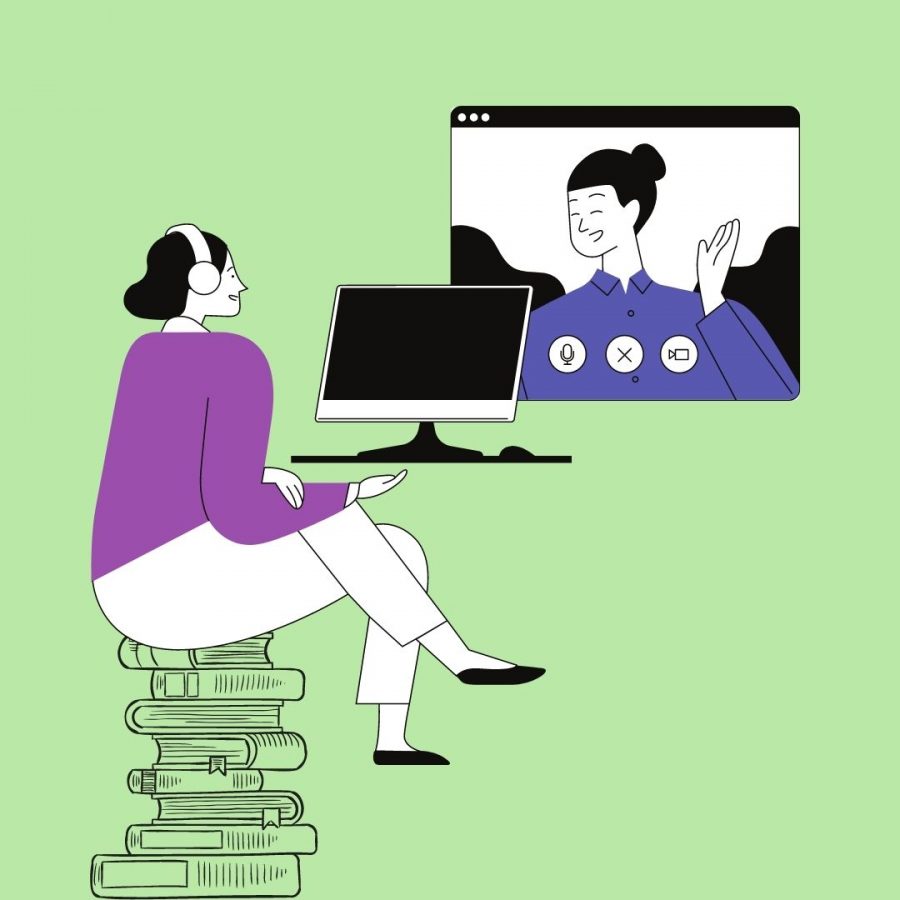Asynchronous learning is a nice way of saying more due dates
October 12, 2020
“This will be a hybrid course––there will be asynchronous and synchronous learning. The course is broken into Modules…” Sound familiar?
Many, if not all Simmons students have read similar wording within the opening lines of their course syllabuses this semester. While that quasi-meaningless phrase seems like nothing astray from the usual formalities of early semester paperwork––one term has dramatically changed the way we learn, access, and submit assignments. The true meaning of asynchronous learning is debatable, but one thing I do know? I am not a fan.
Asynchronous learning feels like another putrid outcome of the 2020 COVID-19 era, but the concept actually stems back to the late 19th century. Distanced education began taking advantage of postal services by mailing academic material to remote learners, and by the 30s, recorded audio and broadcasted lectures made their debuts. The U.S. military immediately latched onto the idea for remote training and before long it seemed like everyone could learn a thing or two from home!
Colleges and universities waited until the 1980s to invest in technology that would support asynchronous learning: computers, programming, email, discussion boards, etc. By the 1990s, cash cows known as telecampuses were introduced, offering everything an in-person education could but with zero geographical restrictions––cue that one incredibly catchy Education Connection commercial: “now I’m takin’ my classes online, gettin’ my degree on my own time… get connected for free, free! With Education Connection!”
Today there are hundreds of online schools and universities that offer virtual learning like the Simmons graduate program, and COVID-19 has only risen that number.
In theory, asynchronous learning means education that happens at a different time and place from instruction. The Glossary of Education Reform defines it as “most commonly applied to various forms of digital and online learning in which students learn from instruction—such as prerecorded video lessons or game-based learning tasks that students complete on their own.”
Synchronous learning on the other hand, is “a general term used to describe forms of education, instruction, and learning that occur at the same time, but not in the same place.”
One stands for that dandy work you do on your own time and the other encompasses those weekly Zoom calls we now call live sessions.
In theory, this all works out smoothly; Simmons, like many other schools, was handed an impossible issue regarding public health and here was this perfect and safe solution to provide us with quality learning at a manageable pace. Only it hasn’t quite worked out that way for me.
Whether I care to admit it, I am a full-fledged, calendar-yielding, list-making, type-A planner. I like to know what’s been assigned, how to complete it, and when it’s due. During my first three years at Simmons, I blossomed under that philosophy. I simply went to class and turned in hard copies of my assignments on said class date. Wash, rinse, repeat.
But now, everything has been upended. My classes meet on one day, yet our first drafts of assignments are due on another. Then the final drafts of those assignments are due on another and discussion posts on another and responses to those discussion posts on––you guessed it––a different day.
Even my most colorful highlighters and in-depth Google Calendars cannot rid me of the constant fear that I’m forgetting something.
And that’s just for one course! Fortunately, half of my credits are being completed at an in-person internship because I couldn’t do what these undergraduates taking four or more online classes somehow seem to be doing.
With a new asynchronous learning style comes a change in communication style too. Announcements and important information that used to be confined to mention at the end or beginning of class is now done through email, at any time. Nowadays it seems like each time I check my inbox there are eight new messages from professors citing changes on assignments or Simmons administrators breaking the next bit of bad COVID news. Perhaps it’s in poor taste to complain about too much communication in such a time of uncertainty, but I can’t even refresh the Gmail app on my phone anymore without a distinct sense of anxiety.
Now that my ranting has been said and done, I’ve mutually realized that there is no one to blame for my abhorrence towards asynchronous learning aside from this pandemic itself. Cliché as it may sound, we are truly all on this ship together. No educator, student, or administrator is free from the stress-inducing side effects of a remote learning format, and it’s no easier for anyone else than it is for me. If I’ve gained anything from the fall semester thus far, it’s an appreciation for in-person classes and immense respect for Robert Aitken, the creator of “America’s first daily planner.”








